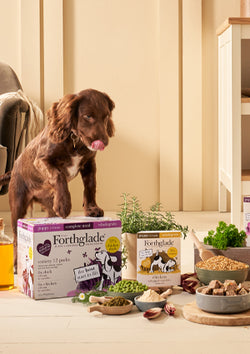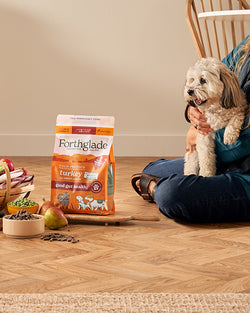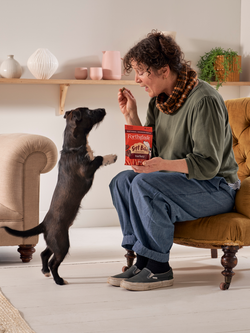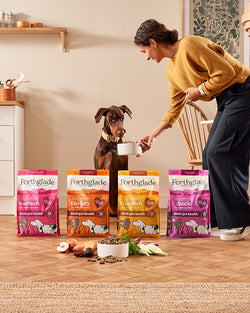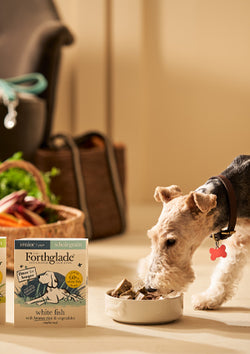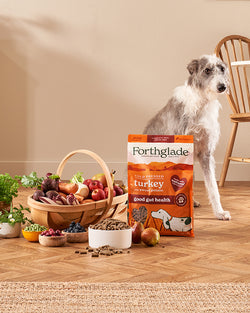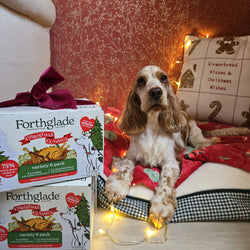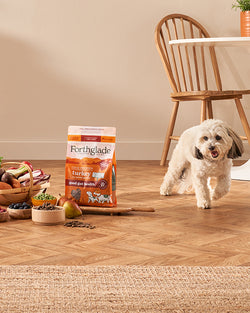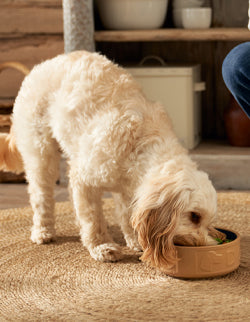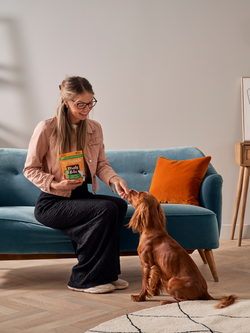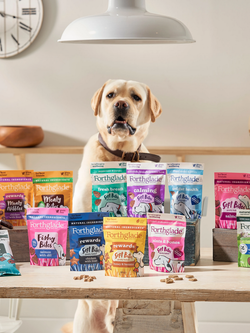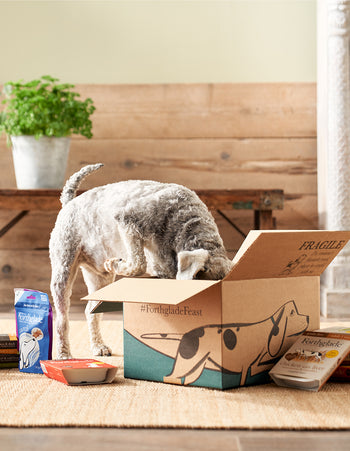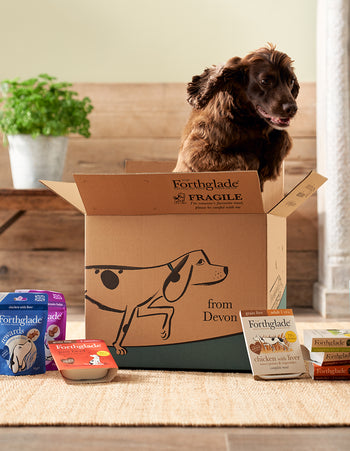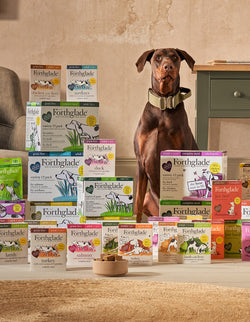Choosing the right food for your dog can sometimes feel a little overwhelming. With so many options on the market – from raw to wet, dry, wholegrain or grain-free – it’s hard to know which one will suit your dog’s needs best.
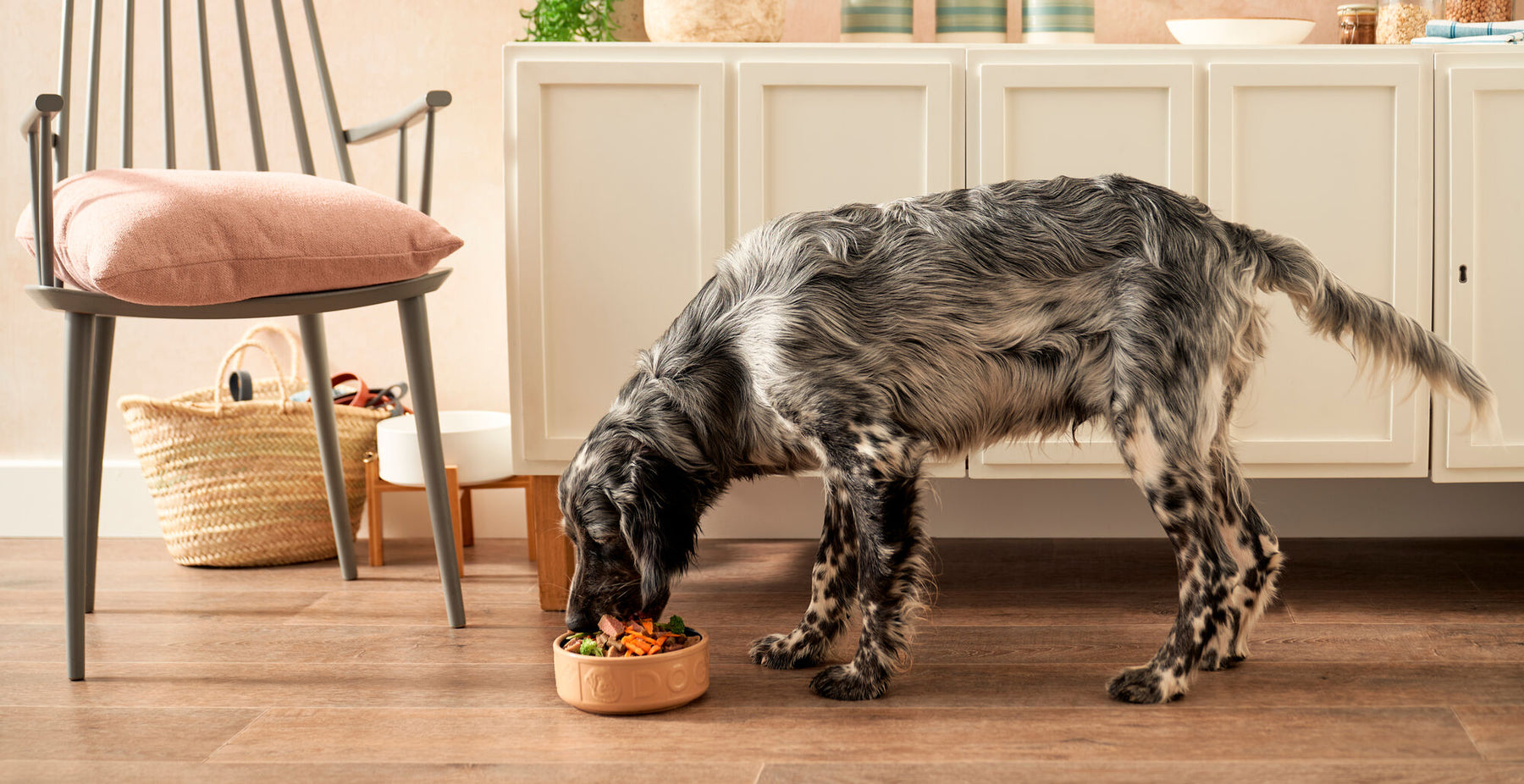
Grain free vs Wholegrain Dog Food: What's Best for my Dog?
Your dog’s diet plays a huge role in their health and wellbeing, so making informed choices is key. Factors such as your dog’s breed, size, age, activity level and any underlying sensitivities or allergies all come into play.
Let’s explore the differences between grain free and grain-inclusive diets, so you can make the best decision for your four-legged friend.
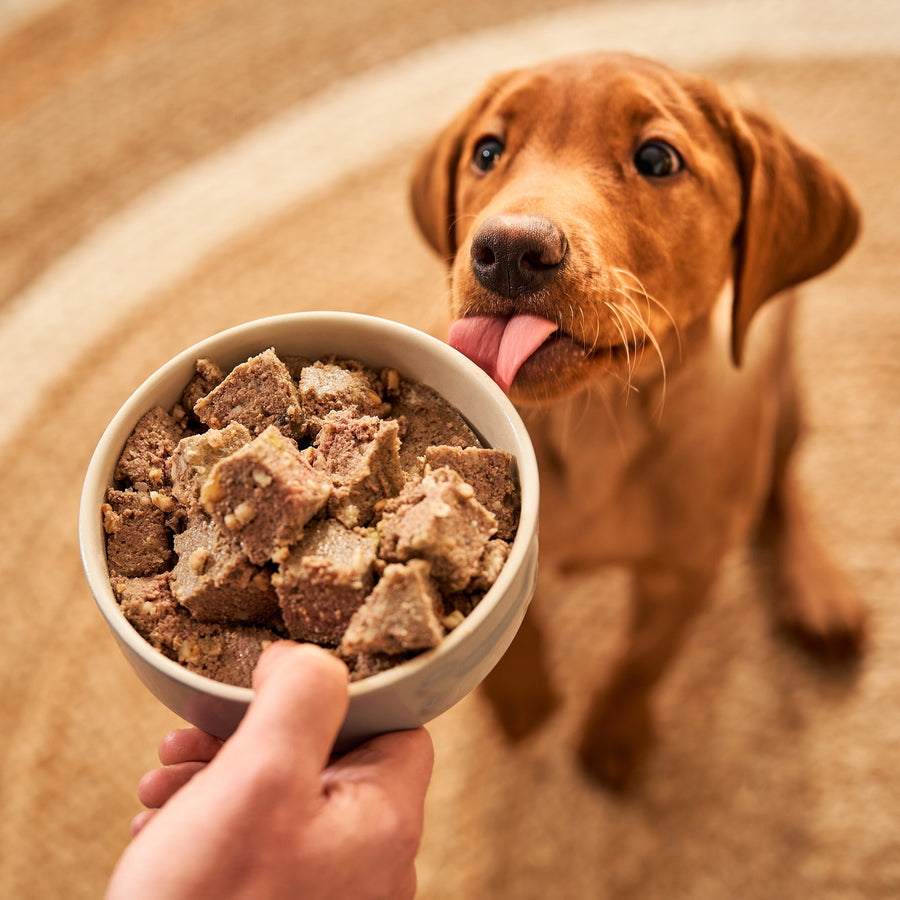
What Is Grain Dog Food?
Grain-inclusive dog food is made using cereals such as rice, oats, barley, or maize. These ingredients are used as sources of carbohydrates, helping to provide your dog with energy throughout the day.
Wholegrains also contain fibre to aid digestion, as well as vitamins and minerals that support your dog’s overall health. When used appropriately, wholegrains can be a healthy part of a dog’s balanced diet.
At Forthglade, we use wholegrains for our grain recipes, crafted with natural, wholesome ingredients and includes brown rice for added fibre and easy digestion.

What Is Grain Free Dog Food?
Grain free dog food is exactly what it sounds like – food made without grains. Instead of rice or oats, grain-free recipes often use alternative carbohydrates like sweet potato, lentils, or peas.
Grain-free food is often chosen for dogs with digestive sensitivities or allergies.
You can explore our complete Grain Free dog food range, specially formulated for gentle digestion and packed with natural goodness.
Grain-Free vs. Grain Dog Food
So, which is better – grain-free or grain-inclusive dog food? The answer isn’t quite so simple. Both can offer health benefits, and both can form part of a nutritious diet – the key lies in choosing what works best for your individual dog.
Below, we explore the benefits of both options to help guide your decision.
Benefits of Feeding Wholegrain to Dogs
Easier Digestion
Wholegrains like brown rice are often easy for dogs to digest – especially when cooked and prepared properly. They’re gentle on the tummy and help support a healthy gut.
If your dog struggles with digestion, you might want to read more in our blog: How long does it take a dog to digest food?


Energy Levels
Grains are a great source of slow-release carbohydrates, which help maintain steady energy levels throughout the day – perfect for playful pups and active adult dogs alike.


Weight Management
When fed in the right portion, grains can support healthy weight maintenance by keeping your dog fuller for longer. High-fibre wholegrains help with satiety and promote balanced energy use.


Skin Health
Some dogs thrive on diets with whole grains, especially when paired with quality proteins and healthy fats. However, for dogs who are sensitive, certain grains might lead to itchy or irritated skin, which in turn can cause fur loss and discomfort. For more on this, see our blog: Why is my dog losing fur?


Benefits of Grain Free Dog Food
Grain Allergies in Dogs
Some dogs experience allergic reactions or intolerances to grains, which can lead to digestive upset, itching, or skin conditions. Grain-free food eliminates these triggers and can bring noticeable improvements in comfort and health.


Help with Flatulence
Grains can contribute to gas and bloating in dogs with sensitive stomachs. Grain-free diets often contain more easily digestible ingredients, which can reduce wind and the discomfort that comes with it.


Better Breath
When dogs digest their food more efficiently, their breath can improve too! Grain-free diets with simple, natural ingredients are often gentler on the gut – which can lead to fresher breath.


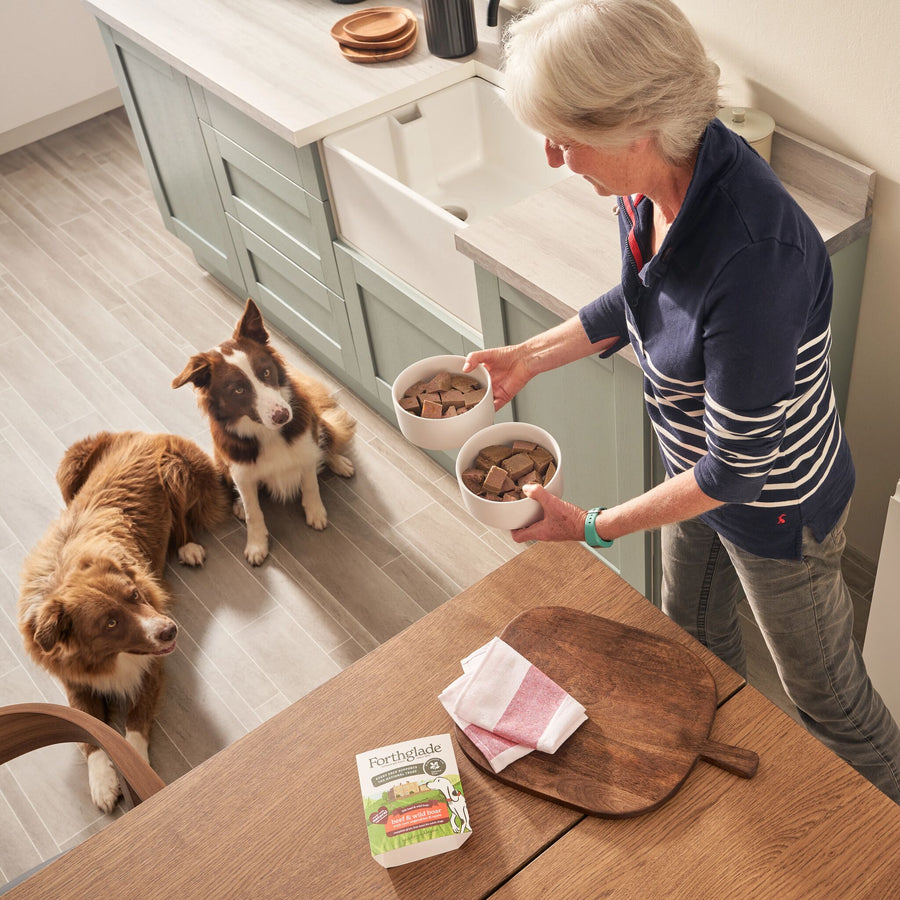
What to Consider When Choosing the Right Food for Your Dog
Cost:
Some Grain-free dog food is more expensive, largely because it replaces inexpensive cereals with higher-quality alternatives like sweet potatoes or chickpeas. While this can be a worthwhile investment, it may not be necessary for every dog.
Nutrition:
Not all grain-free dog foods are created equal. In some cases, they can be lacking in certain nutrients if not properly balanced. Always choose a complete and nutritionally balanced recipe from a reputable source – and avoid brands that rely heavily on fillers or additives.
Whichever type of food you choose, the most important thing is that it’s rich in natural ingredients, contains high-quality protein, and is tailored to your dog’s life stage and health needs.
Takeaway
Whether you choose grain-free or grain-inclusive food, the goal is always the same, to nourish your dog with food that supports their health, happiness, and vitality. If you’re unsure what’s best, your vet is the best person to help guide your decision.
At Forthglade, we believe in keeping things simple. Our natural dog food recipes both grain-free and wholegrain are made using just a handful of carefully chosen ingredients, and absolutely no junk.
Perfect for dogs with sensitivities, allergies, or those that thrive on a grain-free diet.
Great for dogs who benefit from the natural fibre and slow-release energy of wholesome grains.

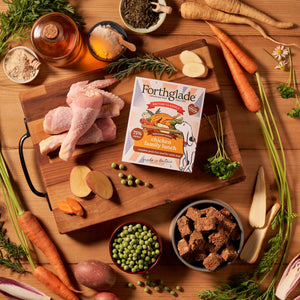
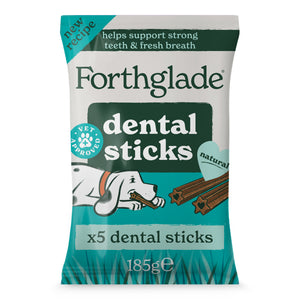

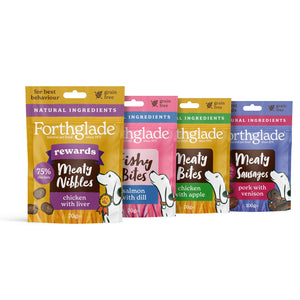
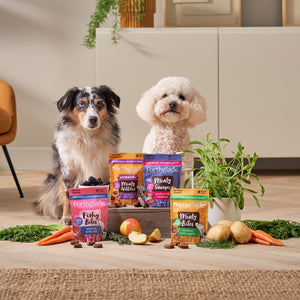


 Over 12,000 5* Reviews
Over 12,000 5* Reviews
 Subscribe & Save At Least 10% Off Every Order!
Subscribe & Save At Least 10% Off Every Order!


